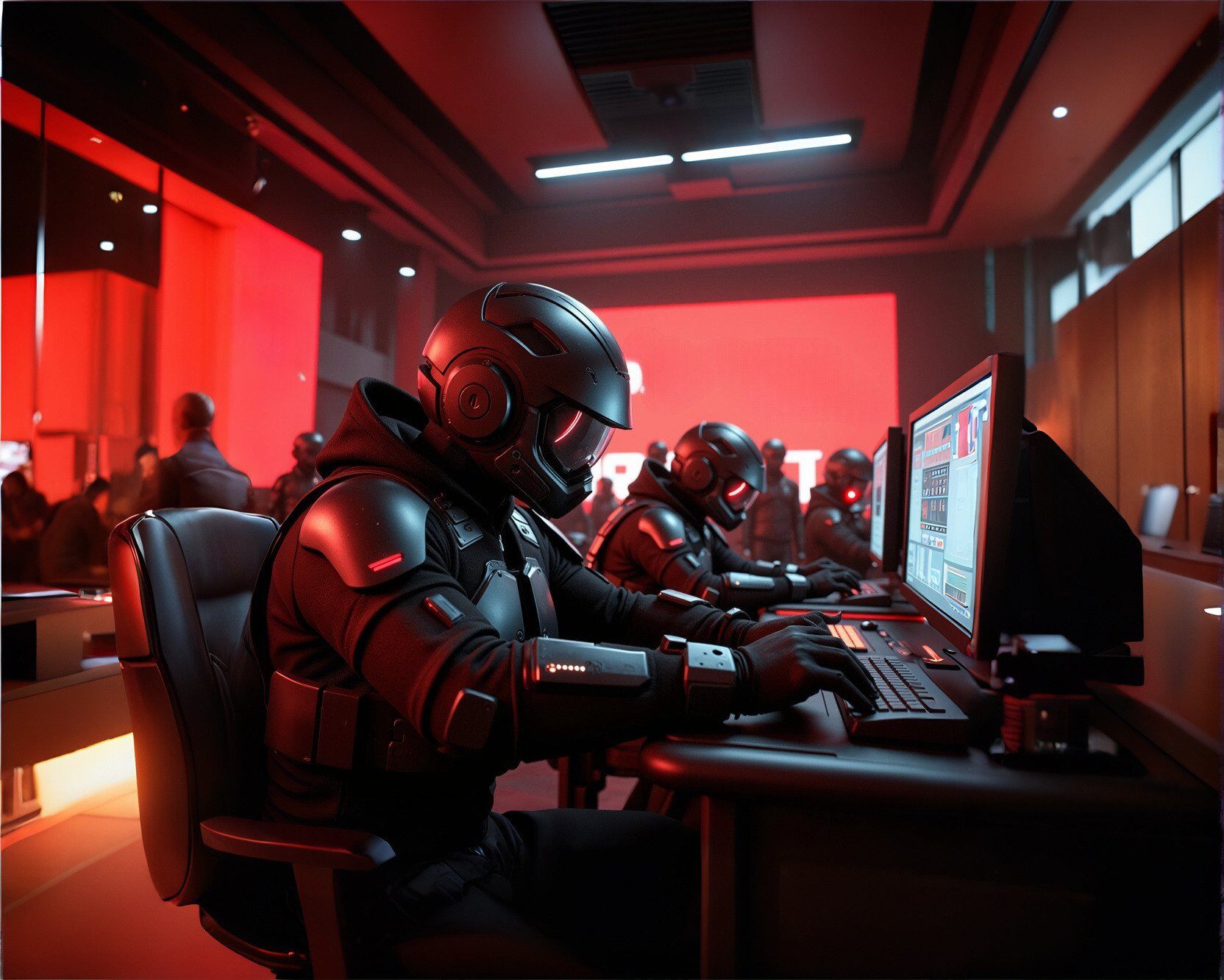.png)
Red Teaming for AI: Why Your AI Strategy Needs an Adversary

What if your AI model was your biggest vulnerability? What if the system you trust to automate decisions, process customer data, or generate insights could be manipulated, tricked, or worse—weaponized against you?
That’s where Red Teaming for AI comes in.
For years, industries like cybersecurity, military strategy, and corporate decision-making have used Red Teaming—an adversarial testing method that simulates real-world threats to uncover weaknesses before an actual adversary does. AI is no different. With its increasing adoption in business-critical applications, AI systems need to be battle-tested in ways that traditional software never required. Because here’s the thing: AI doesn’t fail the way conventional software does—it fails unpredictably, subtly, and sometimes catastrophically.
What Is Red Teaming for AI?
At its core, Red Teaming AI is about thinking like an attacker—whether that’s a bad actor trying to exploit your model, a competitor looking to game your system, or even an internal user unintentionally skewing results. The goal? Identify vulnerabilities, biases, and failure modes before they become real-world problems.
AI Red Teaming involves:
-
Adversarial Attacks – Simulating attempts to manipulate AI outputs, such as tricking a fraud detection model into approving fraudulent transactions or misleading a chatbot into generating harmful content.
-
Bias and Fairness Testing – Stress-testing models to uncover unintentional discrimination in hiring, lending, or customer support AI.
-
Data Poisoning – Seeing how injecting subtle yet malicious data can alter an AI’s learning process over time.
-
Hallucination and Misinformation Checks – Pushing generative AI models to see when they start making things up and evaluating how dangerous those inaccuracies might be.
-
Security Breach Simulations – Testing how AI-enabled systems might be exploited for unauthorized access, data leaks, or decision manipulation.
It’s not just about breaking the system—it’s about understanding how it breaks, why it breaks, and what needs to be done to fix it.
Why AI Needs Red Teaming Now More Than Ever
AI is no longer a novelty—it’s running business-critical functions. And with that power comes risk. AI models don’t think; they predict. They don’t understand; they correlate. That means they can be fooled. If AI is being used for fraud detection, hiring decisions, medical diagnoses, or financial trading, you better believe bad actors are already figuring out how to manipulate it.
Red Teaming AI isn’t just about preventing cyber threats—it’s about safeguarding AI-driven decisions from unintended consequences. Here’s why it’s non-negotiable:
-
Regulatory Pressure is Mounting – Governments and watchdogs are cracking down on AI accountability, and businesses will need to prove they’ve mitigated risks.
-
Reputation is on the Line – A biased AI model or a rogue chatbot can become a PR nightmare overnight.
-
AI Systems are Vulnerable to Subtle Attacks – Unlike traditional hacking, AI vulnerabilities often require no access to internal systems—just clever input manipulation.
-
AI Can Be Weaponized – From deepfakes to misinformation campaigns, AI isn’t just a target—it can be the weapon itself.
If companies aren’t aggressively stress-testing their AI, they’re running blind into a battlefield where adversaries already have the upper hand.
The Controversy: Red Teaming AI Isn’t Always Welcome
Here’s where things get uncomfortable. Some organizations resist AI Red Teaming because they fear what it might expose. There’s a real tension between innovation and security—teams want to launch new AI features fast, and slowing down to run adversarial tests can feel like friction.
But ignoring Red Teaming is like refusing to test a plane before its first flight. You might get away with it—until you don’t.
Other controversies include:
-
Who Holds AI Accountable? If Red Teams uncover bias or harm, who decides what gets fixed—and who takes the blame?
-
How Far is Too Far? Some AI Red Teaming involves pushing models into dark corners to see how they behave, but does this risk reinforcing bad behavior instead of mitigating it?
-
What if AI Defends Itself? Some advanced AI systems learn from adversarial inputs. What happens when AI starts “fighting back” against Red Teaming techniques?
These debates aren’t theoretical—they’re happening now as organizations wrestle with how much control they really have over the AI they’ve built. Just recently, X.ai’s Grok AI was found to be capable of generating highly detailed instructions for creating a chemical weapon when prompted in the right way. This shocking revelation underscored just how easily AI can be manipulated into producing dangerous and unintended outputs, raising serious concerns about AI safety, responsibility, and the urgent need for rigorous Red Teaming before models are deployed into the wild. Read more about this incident here.
How to Get Started with AI Red Teaming
If you’re implementing AI in any serious capacity, Red Teaming shouldn’t be an afterthought—it should be built into your AI governance from day one. Here’s how:
-
Assemble a Red Team – This can be internal (a dedicated security team) or external (hiring AI security experts and ethical hackers).
-
Define the Attack Surface – Identify which AI models are most critical and vulnerable in your organization.
-
Simulate Real-World Threats – Conduct adversarial attacks, test for biases, and push your AI to its breaking point.
-
Document and Fix – The value isn’t in the attack itself but in what you learn. Track vulnerabilities and enforce mitigations.
-
Retest Continuously – AI is always evolving, which means Red Teaming can’t be a one-and-done exercise.
The Future of AI Red Teaming: Evolve or Get Exploited
AI is advancing at breakneck speed, and bad actors are innovating just as fast. Companies that build AI without stress-testing it like an adversary are setting themselves up for failure.
The next era of AI security will be defined by who does Red Teaming better—because in the world of AI, the only thing worse than having your model hacked is not realizing it already has been.
So the real question isn’t if you should Red Team your AI. It’s how soon can you start?







